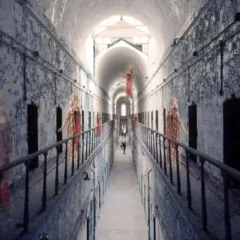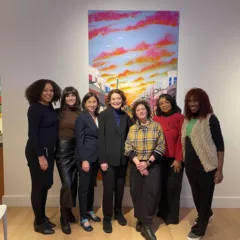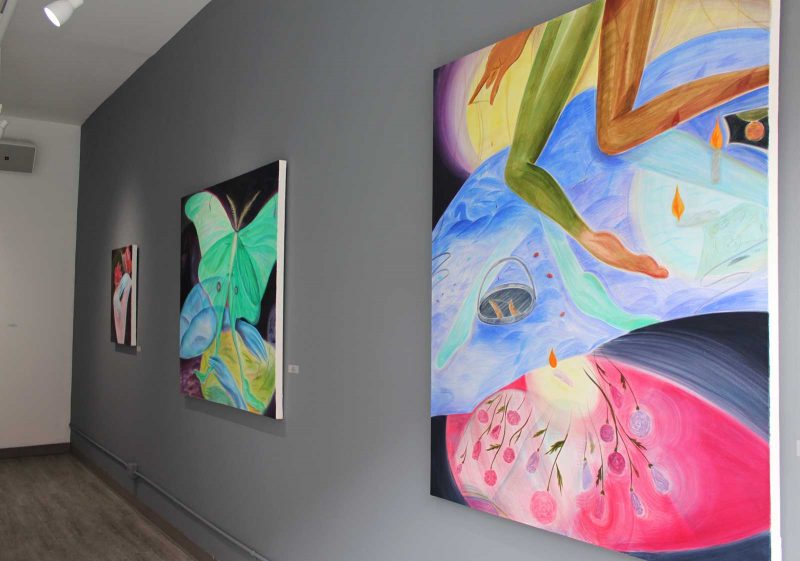
In Bhanu Kapil‘s simultaneously chaotic and meditative travelogue-turned-novel Incubation: A Space For Monsters, monstrosity is defined as a refusal to assimilate to one’s circumstances. Focused on impermanence and othered-ness, the book is the thematic basis for 12 Gates Arts’ latest offering, A Space For Monsters.
In an Instagram live rundown of the show, guest curator Ambika Trasi stressed the idea of the featured pieces being a processing of emotions. Most of the art by the three women in this exhibition hint at a deep distress, works seemingly made out of or in reaction to states of emergency. The monstrous events on the gallery’s walls range from obscure, personal states of transformation to implied colonial oppression.
Untitled (No Lacks) is a series of five graphite drawings on wooden boards by Kaveri Raina. These studies in shadow and perspective continually challenge the viewer’s angle, depths shifting depending on where you stand. Produced in 2020, the series consists of abstractions that remind me of a (literally) warped domestic state or a study of our currently locked down society — beings in television-esque darknesses, seats that double as vanities, and house slippers on checkered floors, to name a few. Along with these floors, other graphite grids continue to give shape to the work, illustrating a process that otherwise feels hard to follow.
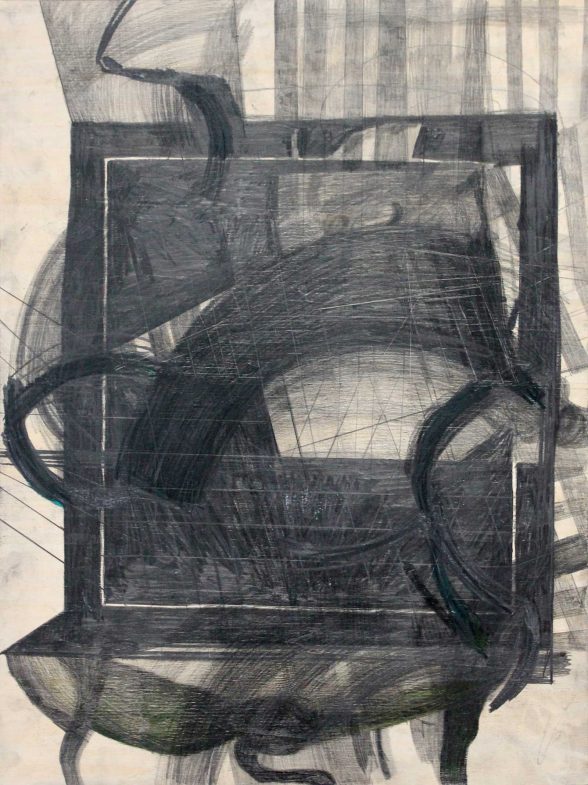
One of Maryam Hoseini‘s two acrylic paintings, “Don’t Talk About Women If You Are A Liar,” also includes some pencilled gridding, but here it’s more of an accent to the beautiful, skeletal backdrop of mountains. Three women — one crying, one blinded, one headless — move through a brown and blue space, seemingly fleeing, following the blue current that leaves the borders of the wood panel and flowing down to the floor of the gallery. A single leg remains in a small patch of greenery, the remnants of life in an abandoned zone.
Hoseini’s other piece “The Future is A Liar” feels like a history without a precise timeline. Another three beings (this time only heads) illustrate centuries past in their styles of dress; medieval helmets, flowy headscarves, and bareheaded awe. In spite of some foliage intermingled with a population of legs, modern automatic rifles and skyscrapers warn of the looming threat of the West. A deep green and that same brilliant blue leaves the board for 12 Gates’ gallery space, again to the floor. “The Future” is almost a prequel to the abandoned beauty of “Don’t Talk About Women.”
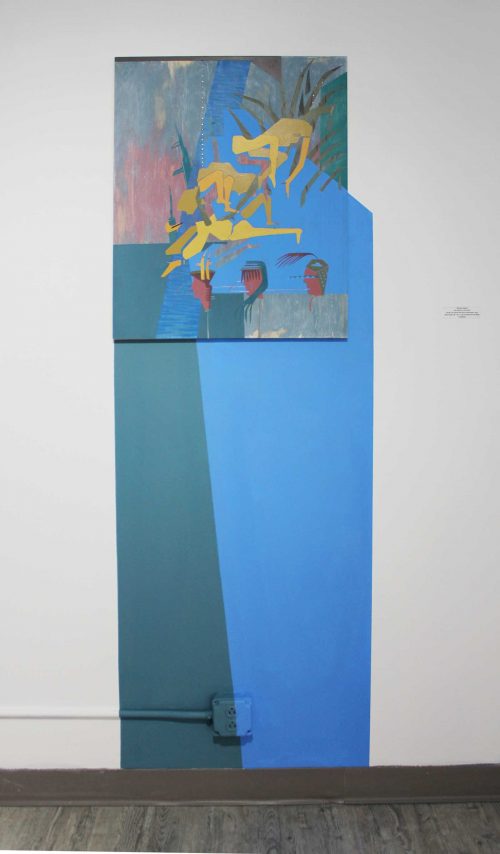
Narrative also comes through in Anjuli Rathod‘s work. Across three large acrylic and flashe paintings, her recurring character Red undergoes a transformation from an anxious, uncertain human state to an ethereal, winged and ascendant being. The story is magical, led by vibrant color choices and images that shift in meaning between pieces. At the same time, Rathod’s commitment to deep shadows enhanced things in a way that brought my mind and physical presence back to Kaveri Raina.
In the center of the room were two small pieces by Rathod, glazed acrylics resembling glowing, saucy red entrails. When first engaging with them, I wasn’t sure what to think. Then it clicked. Sometimes as we process traumatic things imposed by the world, certain parts of us are shed. This can happen many ways, some of them gory. We might associate the visceral experiences of “Organ I” and “III” with monsters, without understanding what transforms them. When someone’s going through something, they don’t want to cooperate with what’s imposed. This is a space for monsters.
“A Space For Monsters” is showing until April 11th, 2021 at 12 Gates Arts, located in Old City @ 106 N.2nd St. The gallery is open to the public Wed-Sat at limited capacity, with respect to city guidelines.


